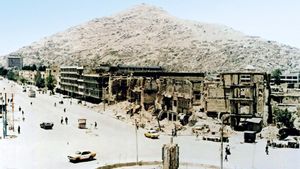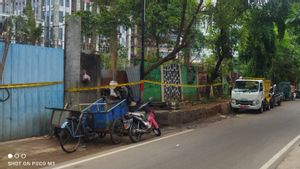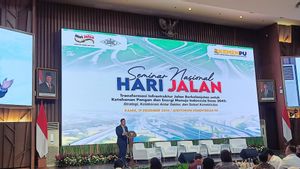JAKARTA - On September 28, 2018, an earthquake rocked Donggala Regency and Palu City. After that, aftershocks sprang up and triggered a tsunami that ravaged Tadulako Earth and its surroundings.
In Palu, the earthquake shook up to a magnitude of 7.4 on the Richter scale. It was reported that the epicenter was at a depth of 10 km. While the position of the epicenter of this earthquake was 27 km northeast of Donggala.
Not long after, the Meteorology, Climatology, and Geophysics Agency (BMKG) issued a tsunami warning. BMKG warned that sea waves would reach 0.5 to three meters. Three to six minutes later, Palu City was hit by waves as high as six meters.
The incident was so fast that many people did not have much time to save themselves from the brunt of the waves. In addition, many people did not know the tsunami warning because the communication network was broken due to the previous earthquake.
After the earthquake and tsunami, Palu again faced a natural phenomenon, namely liquefaction. Citing the BBC, the shock caused by the earthquake caused the ground to lose its bonds. This causes the soil to dissolve like water and then flow, carrying buildings and vehicles on it. Liquefaction takes place on sandy soil that is easily submerged in water, such as the soil in Palu City which is close to the sea.

According to a report from the Center for Volcanology and Geological Hazard Mitigation (PVMBG), the earthquake in Palu occurred due to the activity of the Palu-Koro fault. "Based on the position and depth of the epicenter, the earthquake was caused by active fault activity in the Palu-Koro fault zone which is trending northwest-southeast."
Still from the PVMBG report, the area around the epicenter is generally composed of pre-tertiary, Tertiary, and Quaternary rocks. The area adjacent to the epicenter of the earthquake at that time was Donggala Regency and Palu City, where the area is generally composed of Pre-Tertiary metamorphic rocks, forming fault lines with steep slopes and mostly weathered, sedimentary rocks, volcanoes, igneous and metamorphic rocks. Tertiary to Quaternary. Earthquake shocks will be felt on a loose and weathered rock making it more vulnerable.
Rebuild
A number of foreign parties offered assistance to Palu and Donggala. Initially, the Indonesian government did not immediately receive assistance. The President of the Republic of Indonesia, Joko Widodo, finally accepted the assistance. Collectively, the UK, United States (US), Australia, and New Zealand provided USD 20.8 million.
At that time, many Indonesians took part as volunteers and humanitarian workers. Many of the broken and damaged access made the distribution of aid hampered. Assistance from outside Palu is also increasingly difficult to distribute due to the damaged runway of Mutiara Sis Al-Jufri Airport.

The death toll from the earthquake, tsunami, and liquefaction in Palu reached 4.340 people. In early 2019, the Governor of Central Sulawesi Longki Djanggola said that the death toll spread across Palu City, 2.141 people, Sigi Regency 289 people, Donggala 212 people, and Parigi Moutong 15 people or a total of 2.657 people. There are 667 missing victims, 1.016 unidentified fatalities.
Citing Republika, in terms of material losses, lightly damaged houses in Palu City were recorded at 17.293, moderately damaged 12.717, and heavily damaged 9.181. Meanwhile, 3.673 houses were reported missing. In Donggala Regency, 7.989 houses were lightly damaged, 6.099 were moderately damaged and 7.215 were heavily damaged, and 75 houses were reported missing.
Survivors have to face another reality that they have lost their homes. This forced them to remain in the refugee camps, even for up to three years. Until finally on September 3, 2021, 1.500 houses for Palu residents, especially for victims of the 2018 earthquake and tsunami, were inaugurated by the TNI Commander, Marshal Hadi Tjahjanto. It is known that all the housing units are the result of donations from humanitarian foundations for the people who were victims of the earthquake and liquefaction in Palu, Central Sulawesi.
*Read other information about TODAY's HISTORY or read other interesting articles from Putri Ainur Islam.
More on TODAY'S HISTORY
SEE ALSO:
The English, Chinese, Japanese, Arabic, and French versions are automatically generated by the AI. So there may still be inaccuracies in translating, please always see Indonesian as our main language. (system supported by DigitalSiber.id)















